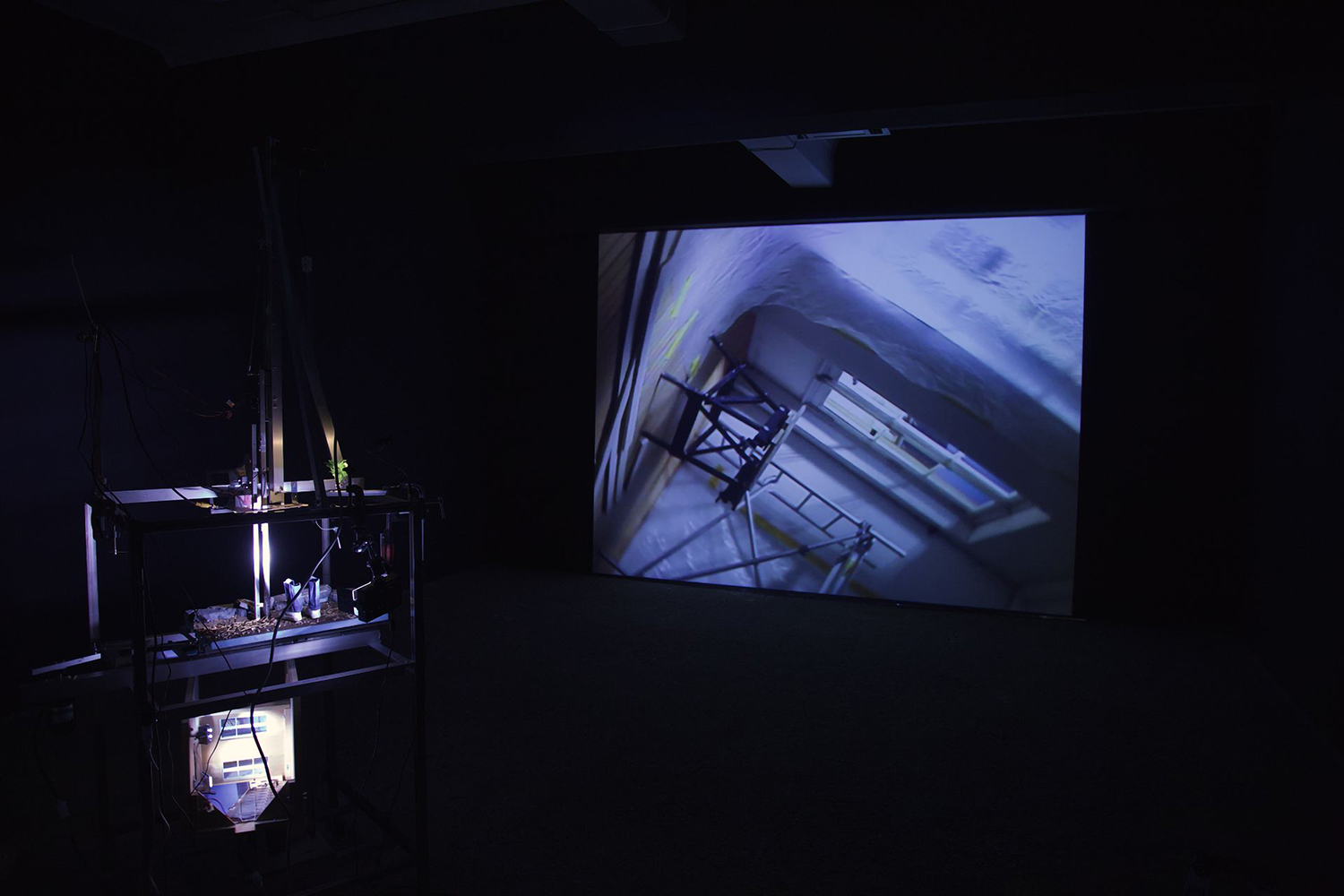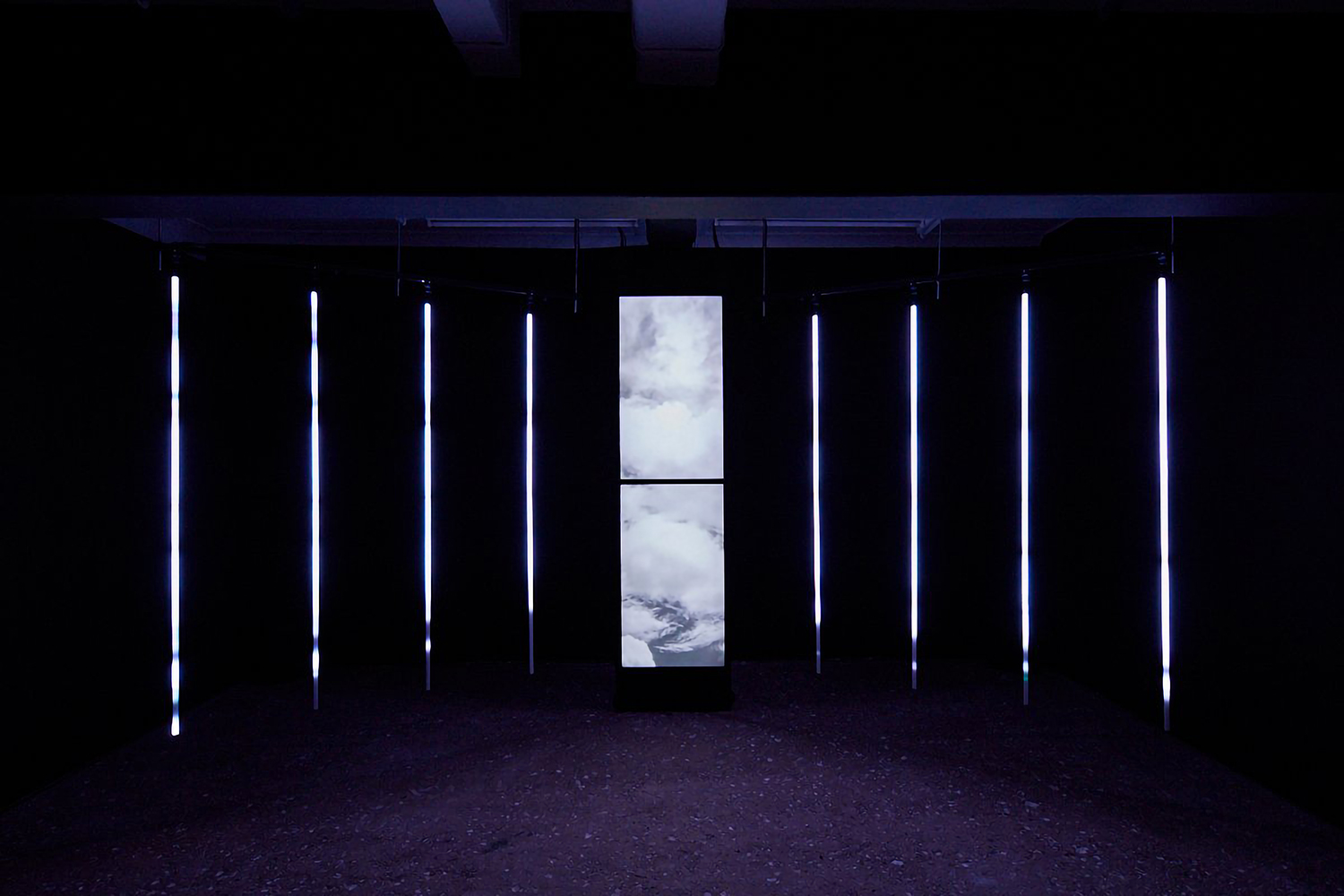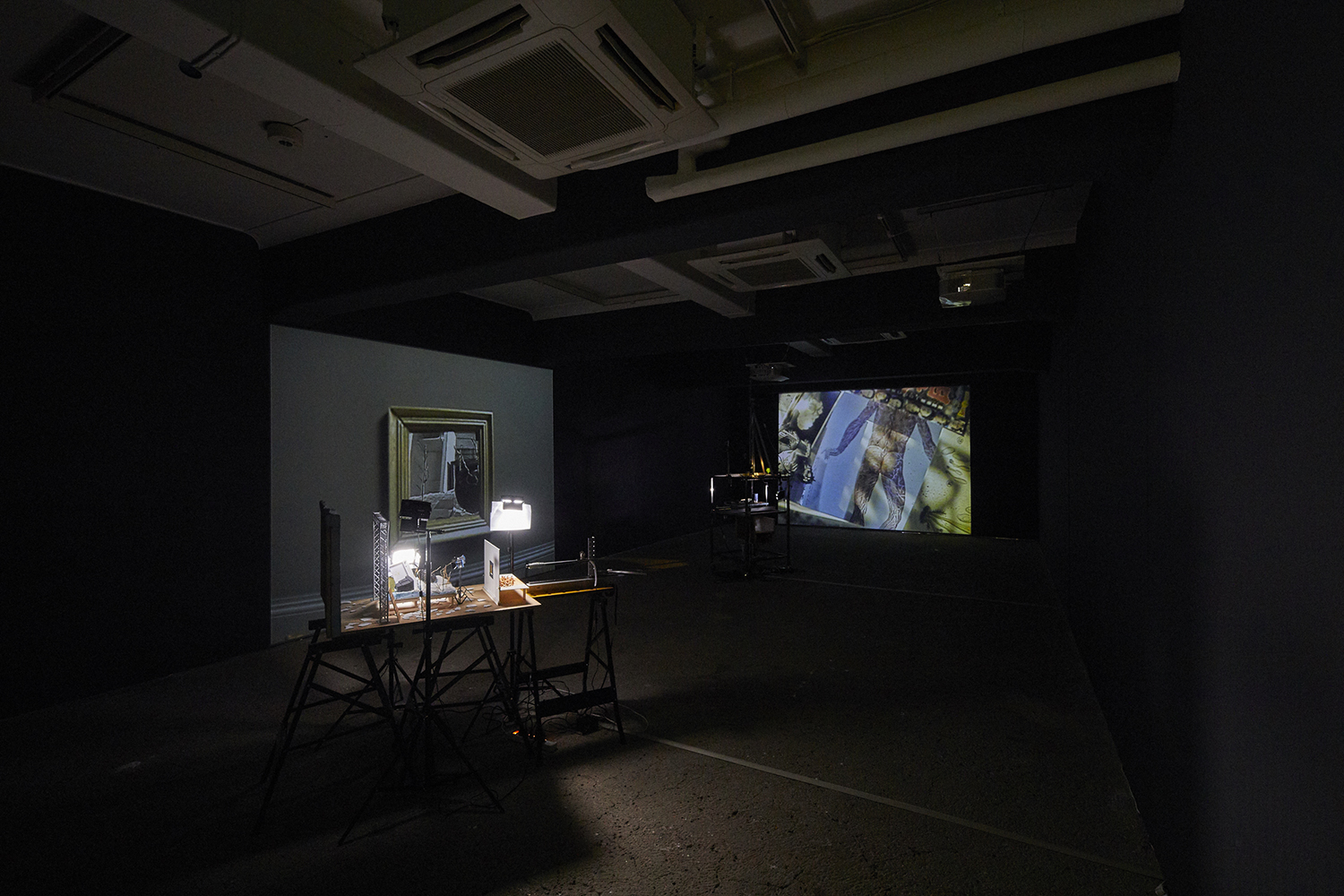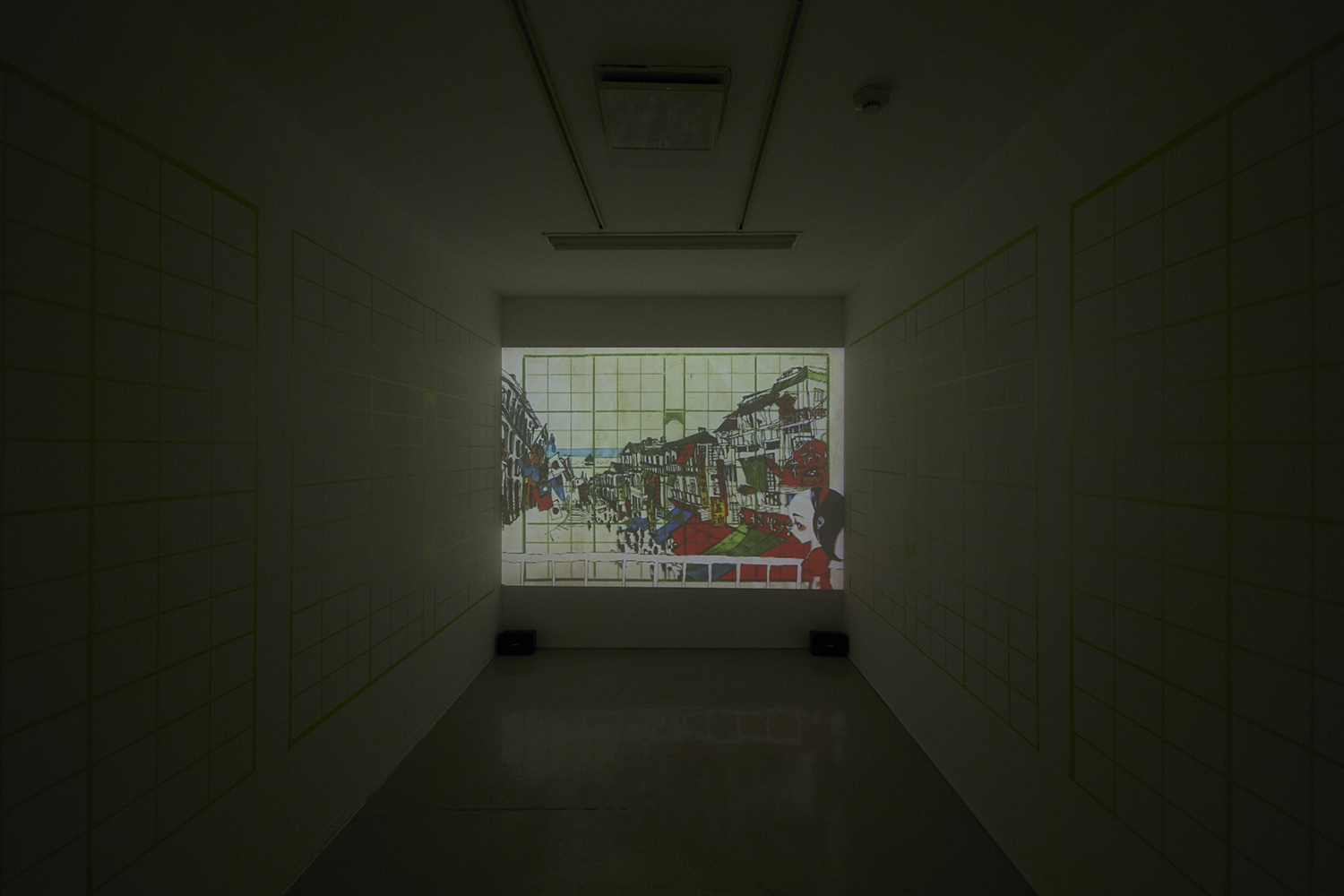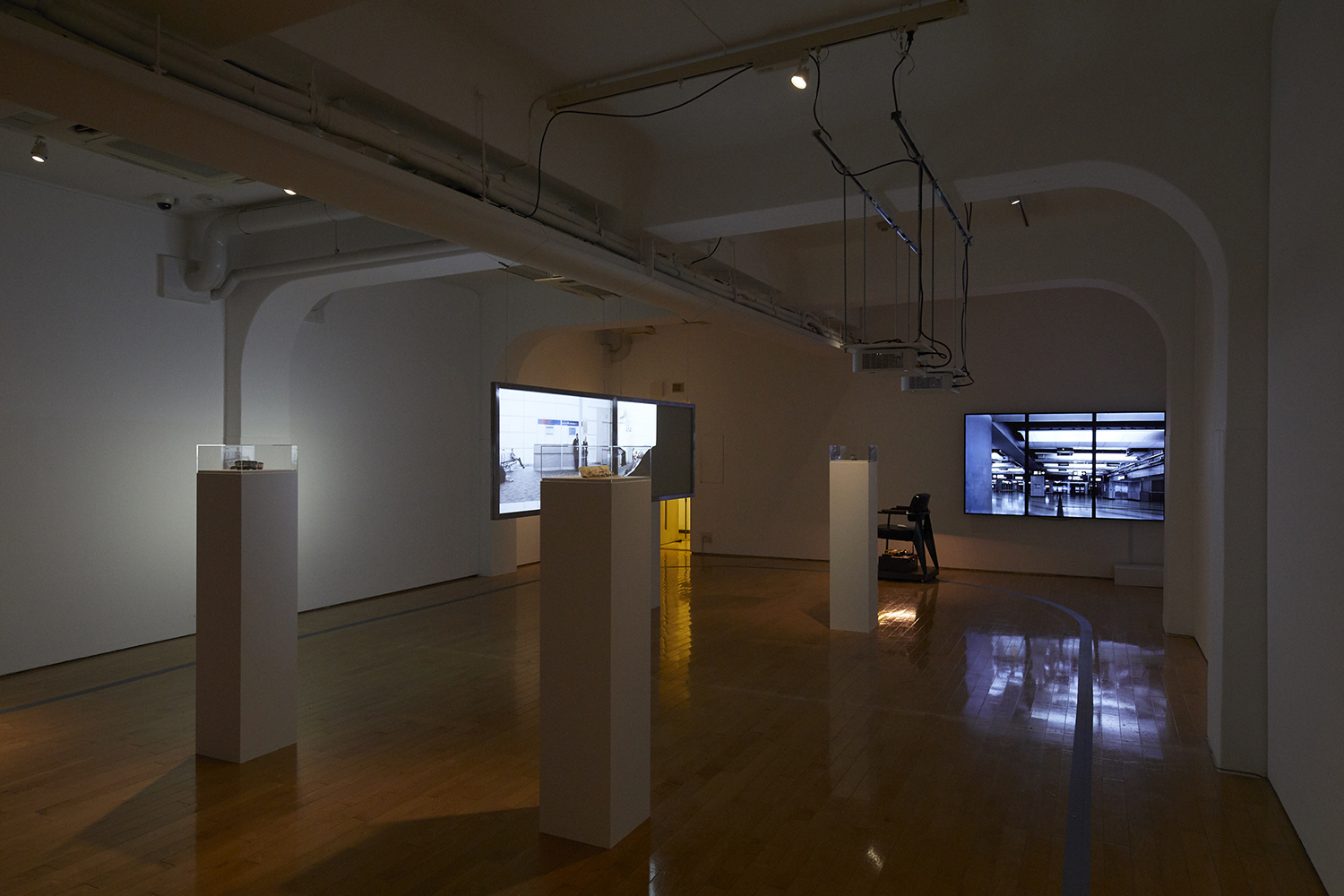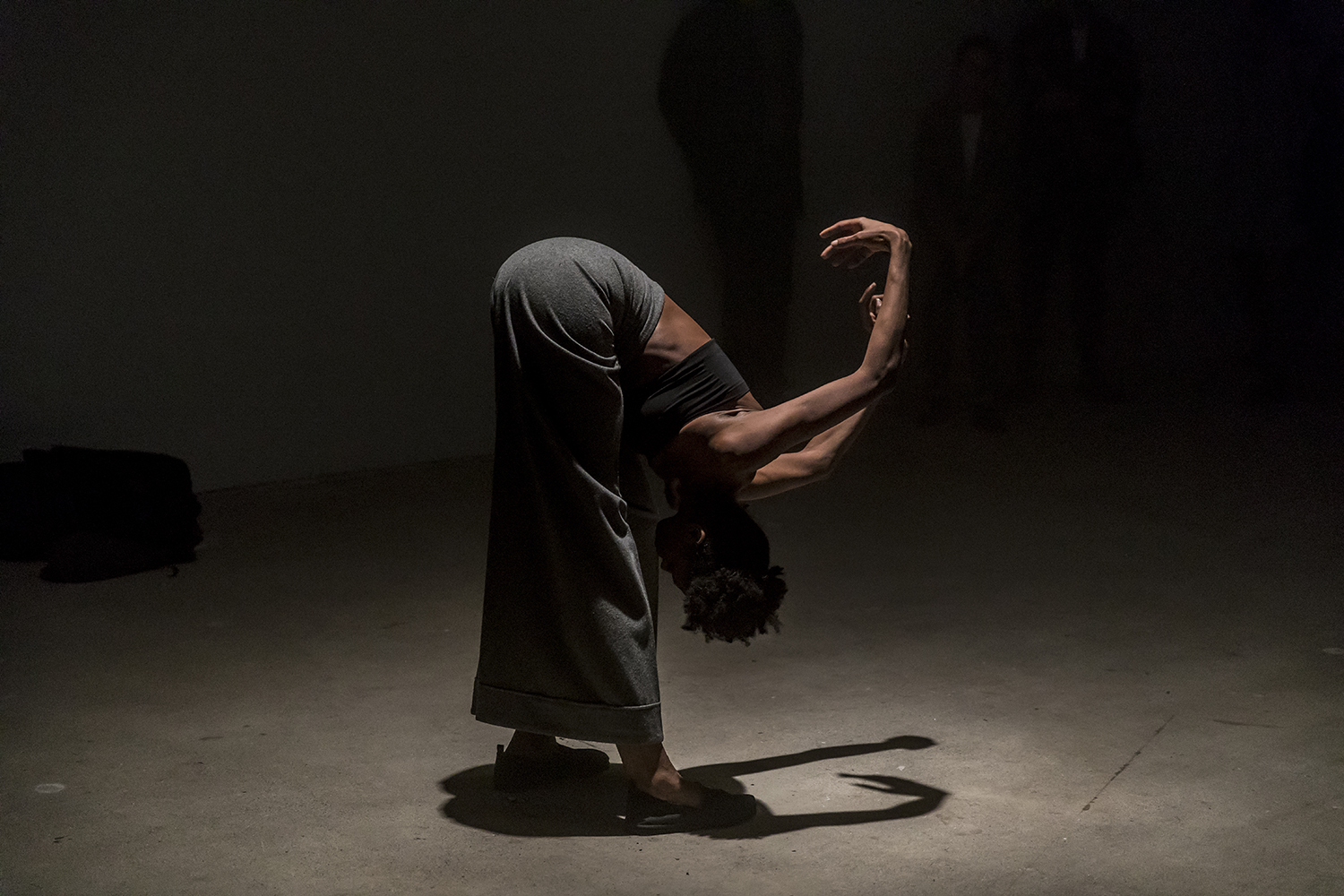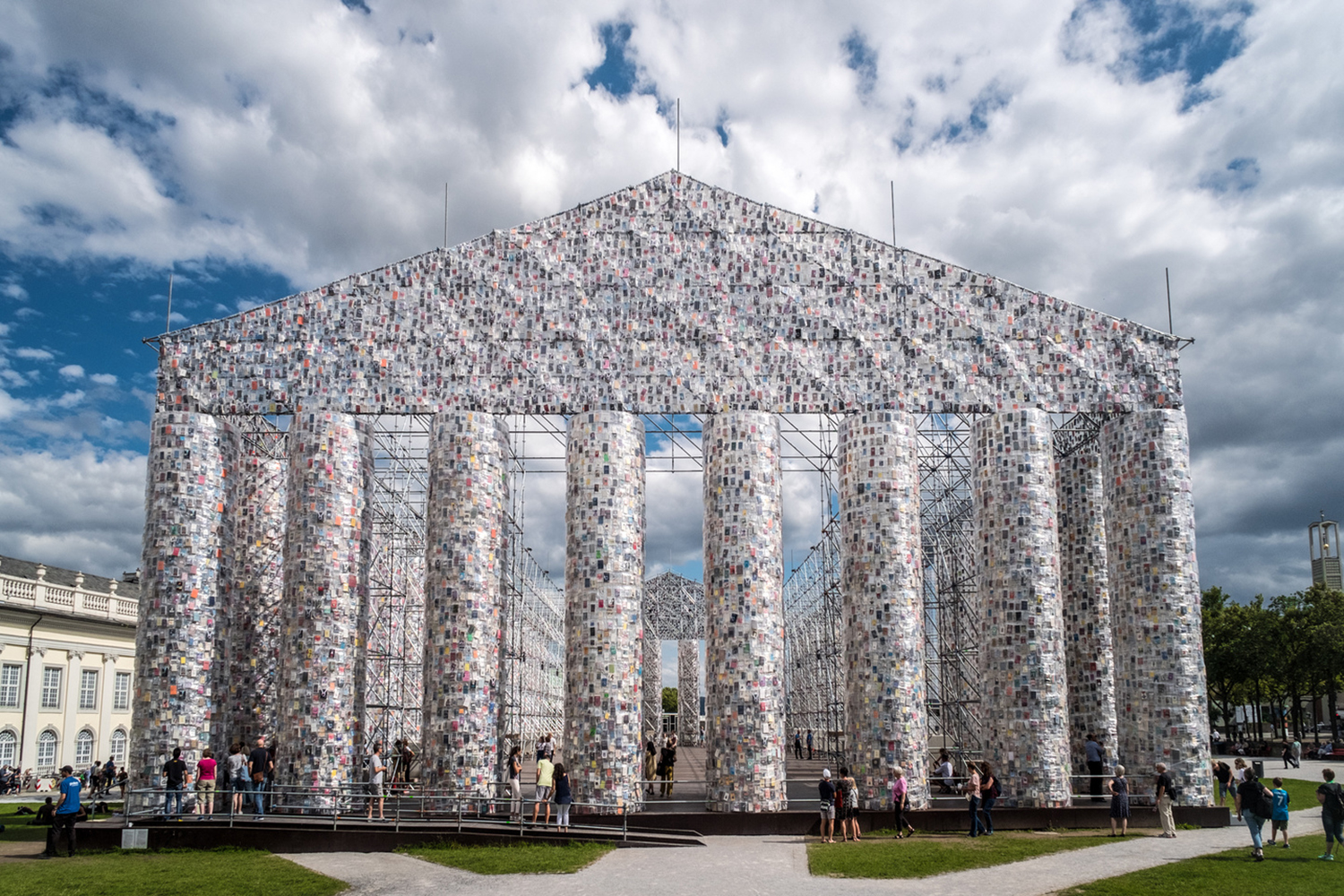For its second edition, TOKAS Project invited Hong Kong Arts Centre and independent curator Yuk-Yiu Ip to present a media art exhibition introducing six artists from Japan and Hong Kong. Physical space is fast disappearing these days in metropolitan cities, whereas nonphysical — virtual, imaginary, cyber, or networked — spaces are a growing presence in our lives. With this dynamic in mind, particularly in the context of the heavily populated cities of Tokyo and Hong Kong, “False Spaces” considers the multifaceted and complex issues of space.
Variously employing installation, video, animation, and viewer participation, most of the artworks in the exhibition address the idea of space by looking at its conceptual formation, whereas two pieces made a more direct and physical approach. Kosuke Nagata’s audio-guided installation of various objects and digitally manipulated images effectively revealed the discrepancies between human recognition of spatial borders and that of artificial intelligence. Two live video installations by Ryusuke Ito, using a small camera repetitively moved in and out of a handmade quasi-film set or sculptural landscape, visualized the perceptual gap between reality and delusion. WARE’s audio-visual installation created a unique sensory experience by decoding and reconstructing a familiar cityscape, whereas Michiko Tsuda employed 3-D reproduction technologies to explore notions of authenticity by recreating structures from video footage shot at airports. Although they felt straightforward at first glance, Stella So’s animation praising the beauty of prewar Hong Kong and Tsz-Kwan Ng participatory work featuring particular metro stations seem in retrospect to have functioned as critique, considering the current social state of the city.
Although key ideas were certainly evident in all of the above, the depth of their individual inquiries into the concept of space varied; some artworks would have benefitted more from further development. However, the overall attempt of the curatorial team to explore different conceptions and modes of space was successful, with shared themes of time and memory threaded throughout the exhibition.

